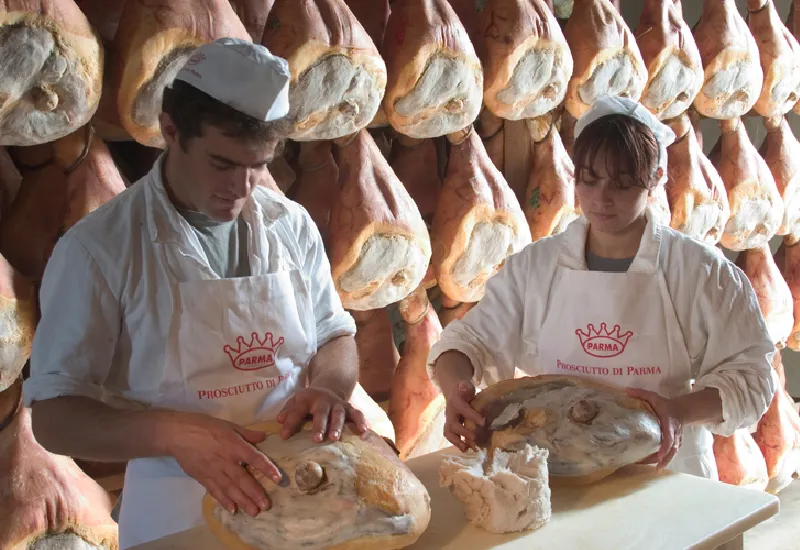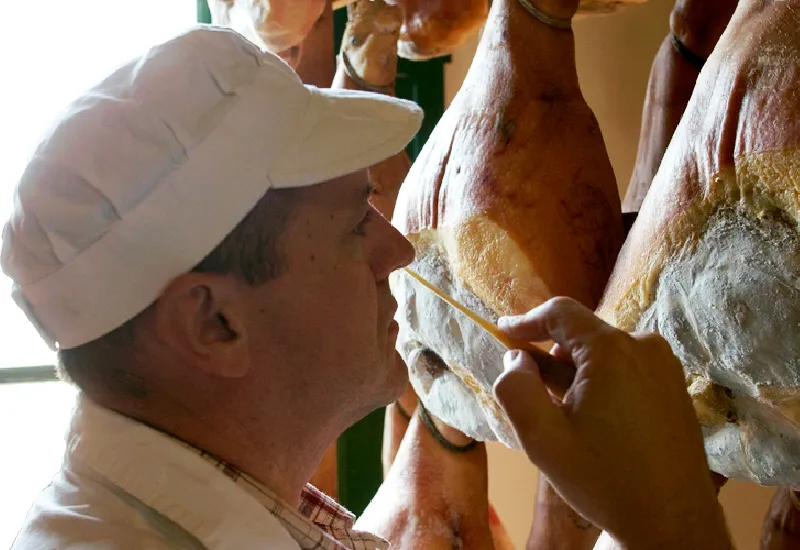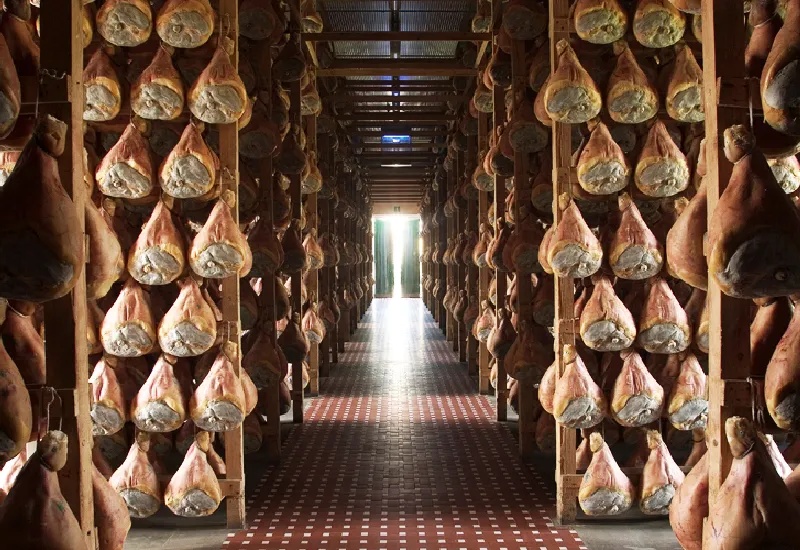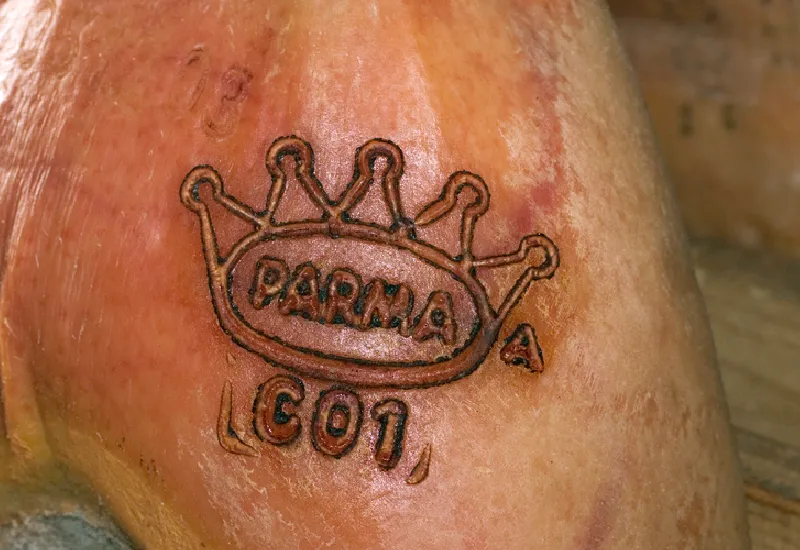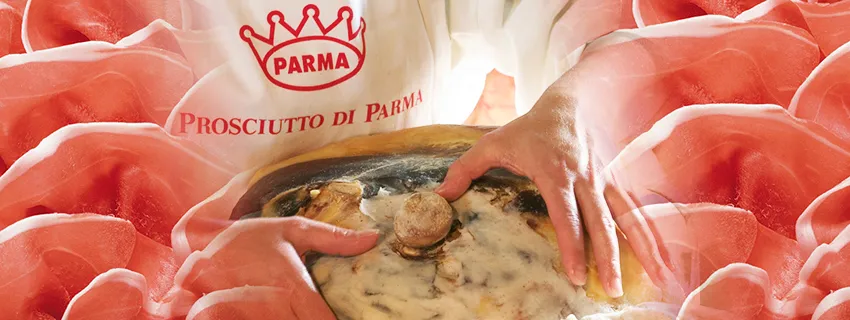Published:
Author: Antonio Maria Guerra
Prosciutto
HISTORY, INFO, PLACES, INTERESTING FACTS

Prosciutto di Parma is a type of Italian ham whose origins date back to a distant past. Let’s find out these origins, the charm of the places where the specialty was born and a large number of interesting facts, taking advantage of the precious collaboration with the Consortium of its more traditional producers.

What is Prosciutto?
Although Prosciutto di Parma is a specialty well known to many ‘food lovers’, the knowledge of this specialty is generally quite superficial: this cured meat, originally from the province of Parma (in the Italian region of Emilia- Romagna), is, in fact, the result of a millennia-long evolution.
Its birth is due to the need, strongly felt by the peoples of the past, of a kind of food that could be preserved for long, and to the consequent discovery that one of the most practical solutions was to sprinkle pork meat with salt.
Prosciutto, as we know it today, is the result of the evolution of this technique.
The back leg of particular breeds of pigs, properly processed and cured, is transformed into a delicacy with a sweet, delicate flavor that, even if can be the perfect ingredient for exquisite recipes, gives its best when enjoyed on its own.
In this article we’ll show you the production method currently used for Prosciutto di Parma ham. To read it, please click this LINK.
The production areas of Prosciutto di Parma.
The true Prosciutto di Parma ham is produced in a very small area located in the province of Parma (Emilia-Romagna Region): it’s bordered to the north by the Via Emilia, to the east by the Enza river and to the west by the torrent Stirone. Many of the manufacturing companies are based in the town of Langhirano.

The history of Prosciutto di Parma ham.
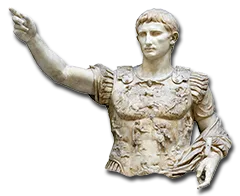 The earliest evidence of the production of a specialty similar to what we now call ‘prosciutto’ in the Parma area date back to the Etruscan period. At that time, the populations settled in the Padan territories used a method involving the use of salt to preserve pork meat. The result was a kind of food not only appetizing but also extremely practical, given the extreme difficulty that the preservation of aliments once entailed. It’s therefore not surprising that it was much appreciated by both the Greeks and the Romans: the latter called the ancestor of ham ‘perna’ if it was made with the thigh of the pig, or ‘petaso’ if it was made with the shoulder (*1). When the Empire fell, it was the people of the Lombards who perpetuated the tradition.
The earliest evidence of the production of a specialty similar to what we now call ‘prosciutto’ in the Parma area date back to the Etruscan period. At that time, the populations settled in the Padan territories used a method involving the use of salt to preserve pork meat. The result was a kind of food not only appetizing but also extremely practical, given the extreme difficulty that the preservation of aliments once entailed. It’s therefore not surprising that it was much appreciated by both the Greeks and the Romans: the latter called the ancestor of ham ‘perna’ if it was made with the thigh of the pig, or ‘petaso’ if it was made with the shoulder (*1). When the Empire fell, it was the people of the Lombards who perpetuated the tradition.
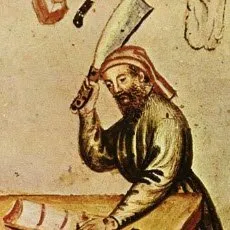 During the Middle Ages, the ‘beccai’ guild took care of meat processing in the Parma area. In 1459 the ‘lardaioli’ guild, specialized in the treatment of pigs, was born. Many testimonials confirm the great success of Parma ham on the tables of the noble Renaissance families. In the following centuries, the celebrity of this specialty further increased. Two years are particularly important in its history: 1963, when the Consortium was founded, and 1996 when the Protected Designation of Origin was assigned.
During the Middle Ages, the ‘beccai’ guild took care of meat processing in the Parma area. In 1459 the ‘lardaioli’ guild, specialized in the treatment of pigs, was born. Many testimonials confirm the great success of Parma ham on the tables of the noble Renaissance families. In the following centuries, the celebrity of this specialty further increased. Two years are particularly important in its history: 1963, when the Consortium was founded, and 1996 when the Protected Designation of Origin was assigned.
Notes:
*1: One of the most famous Roman streets, via Panisperna, derives its name from the combination of two Latin words: ‘panis’ (bread) and ‘perna’ (ham/prosciutto).

Prosciutto di Parma
THE MOST TRADITIONAL PRODUCERS
This article is the result of collaboration between WebFoodCulture and the Consorzio del Prosciutto di Parma, organization gathering the most traditional producers of the famous specialty.


Prosciutto for the Roman legions.
Ancient Romans considered the ancestor of ‘prosciutto’ particularly suitable for feeding their legions.
Read more
This food, in fact, did not require cooking, allowing their armies great mobility, at the same guaranteeing the correct nutritional intake: both elements of fundamental importance in the campaigns of conquest.

Hannibal eats prosciutto.
It is said (*1) that Hannibal, the famous Carthaginian general, during the campaign of conquest of Italy, after defeating the Roman army in the battle of Trebbia (218 BC), was joyfully greeted by the citizens of Parma. As a sign of respect, they offered him their most precious food: salted pork thigh. This specialty can be considered the true ancestor of Italian ham (‘prosciutto’).
Note:
*1: This anecdote is usually attributed to ‘John B. Dancer’, a pseudonym often used by Giovanni Ballarini, historian of gastronomy.

The origins of the word ‘prosciutto’.
Although there is no certainty about it, it’s more than likely that the Italian name ‘prosciutto’ derives from the combination of two Latin words: the particle ‘pro’ (‘prae’, ‘before’) and ‘exsuctum’ (past participle of the Latin verb ‘exsugere’, whose translation is ‘to suck’). This combination would indicate the loss of a good percentage of water caused by the use of salt in the preparation of ham and by the seasoning.

Gioacchino Rossini loved Parma ham.
It’s no mystery that the famous Italian composer Gioacchino Rossini, who lived in the first half of the XIX Century and was the composer of famous operas such as ‘Il Barbiere di Siviglia’ (‘The Barber of Seville’) and ‘La Gazza Ladra’, was a great lover of good food. Less known is his passion for Prosciutto di Parma, which the musician used as an ingredient in some of the recipes he invented.
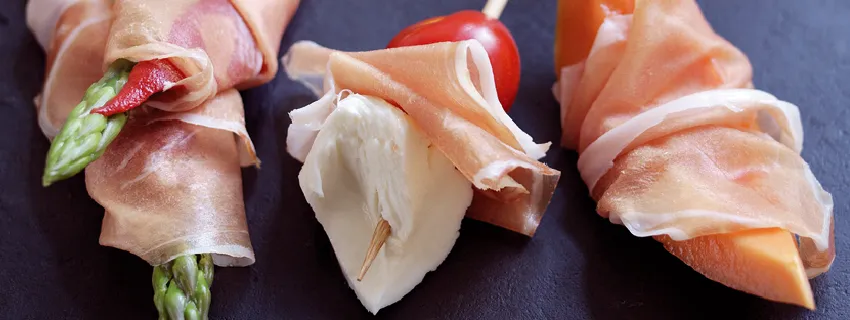
Parma ham: pairings.
There are many types of food with which Prosciutto di Parma ham can be successfully paired. Here follow some of the best choices:
- Vegetables: both raw and cooked;
- Cheeses: ricotta, stracchino, robiola, mozzarella, but also provolone and montasio;
- Fruit: sweet fruits. The pairing with melon is very famous. The pairing with figs is just exquisite;
- Eggs;

Parma ham: nutritional values.
One of the main characteristics of Parma ham is the total absence of preservatives and additives. This natural product contains:
- Vitamins: vitamin B (B1, B2), vitamin E;
- Proteins;
- Minerals: sodium, phosphorus, potassium, iron;
- Fats (mainly unsaturated).
Furthermore, there are no lactose, gluten, nitrates, nitrites and polyphosphates;
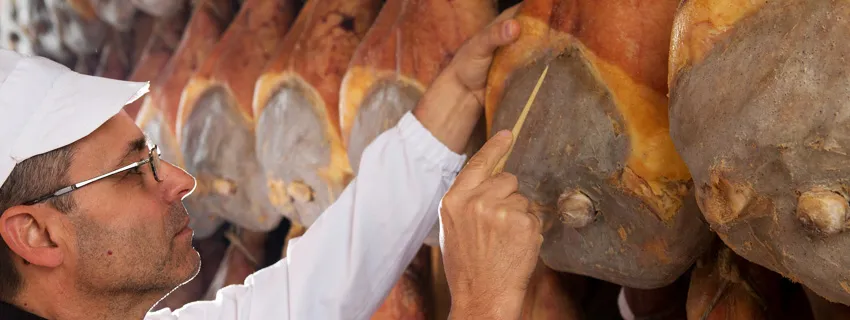

Address: Largo Piero Calamandrei, 1/a
43121 Parma (PR)
Official website: www.prosciuttodiparma.com
Mail: info@prosciuttodiparma.com
Tel.: +39 0521 246211
Copyright information.
The images displayed in this page belong to WebFoodCulture and to the Consorzio del Prosciutto di Parma, with the exception of:
Public Domain images
- Gioacchino Rossini, 1865 (Wikipedia Link) {PD-US}
- Pork meat,Taccuino Sanitatis, Casanatense (Wikipedia Link) {PD-Art} {PD-US}
Creative Commons images
- Hannibal in Italy by Jacopo Ripanda, 15102. Immagine appartenente a José Luiz / Jbribeiro1 (Wikipedia Link)
- Augustus of Prima Porta, image belonging to Till Niermann (Wikipedia Link)

